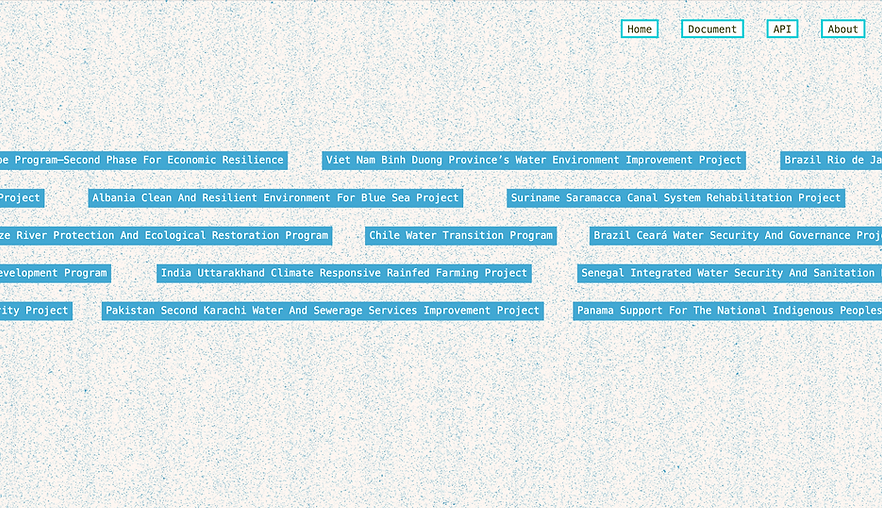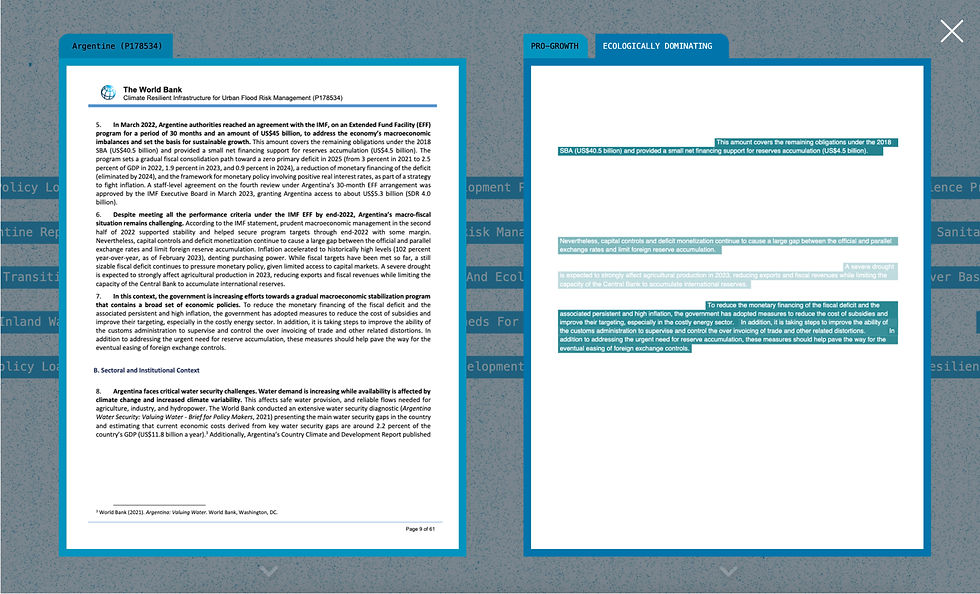

(Un)Natural Language
2025



Website, Installation /
Software Art, Ecolinguistics
Machine Learning
(Un)Natural Language is an artistic computational system that examines how words shape ecological narratives, detecting potential ecological threats in government water-related project documents. Weaving together machine learning, environmental activism, and linguistics, the system offers a new analytical lens for interpreting public documents, uncovering hidden narratives of economic expansion and extractivism. Through a custom-labeled dataset and a fine-tuned BERT model, it reveals and visualizes patterns of pro-growth and ecologically detrimental discourse. Developed into an interactive online archive and installation series, the project reclaims computation as a space for reflection rather than control—inviting viewers to rethink the language shaping our ecological futures through a degrowth lens.
Online Archive - https://driftinglab.github.io/unnatural-language
Access System Assets - API & Demo| Model | Dataset
Installation #1
This project collects program appraisal documents from the World Bank—particularly for hydrology-related projects such as water security and water management. A close reading of these documents reveals that the language employed is far from neutral; rather, it carries implicit ideological assumptions often overlooked in bureaucratic discourse. To excavate these hidden narratives, this project systematically labels each sentence into three categories: pro-growth, ecologically dominating, and neutral.
The system includes four primary phases: data collection and processing, labeling, training and interpretive output generation. The labeling process is intentionally subjective —an artistic act rather than a scientific protocol—guided by an ethical commitment to ecological fairness and degrowth over algorithmic objectivity. This shift challenges the standard of prediction and classification, inviting ambiguity and degrowth into the core of ML practice. The system functions not just as an analytical tool, but as a decentralized site of climate activism. It offers an alternative use of AI, questioning mainstream technological paradigms and introduces an artistic, ecological and decentralized approach.




Installation #2
Two gallery installations were developed from the online archive for gallery audience, offering spatial interfaces for embodied engagement with the documents and machine detections. Each version creates a distinct viewing atmosphere, tailored to different audience scales and interaction rhythms.
Credit
Web Developer: Chenyue xdd Dai



